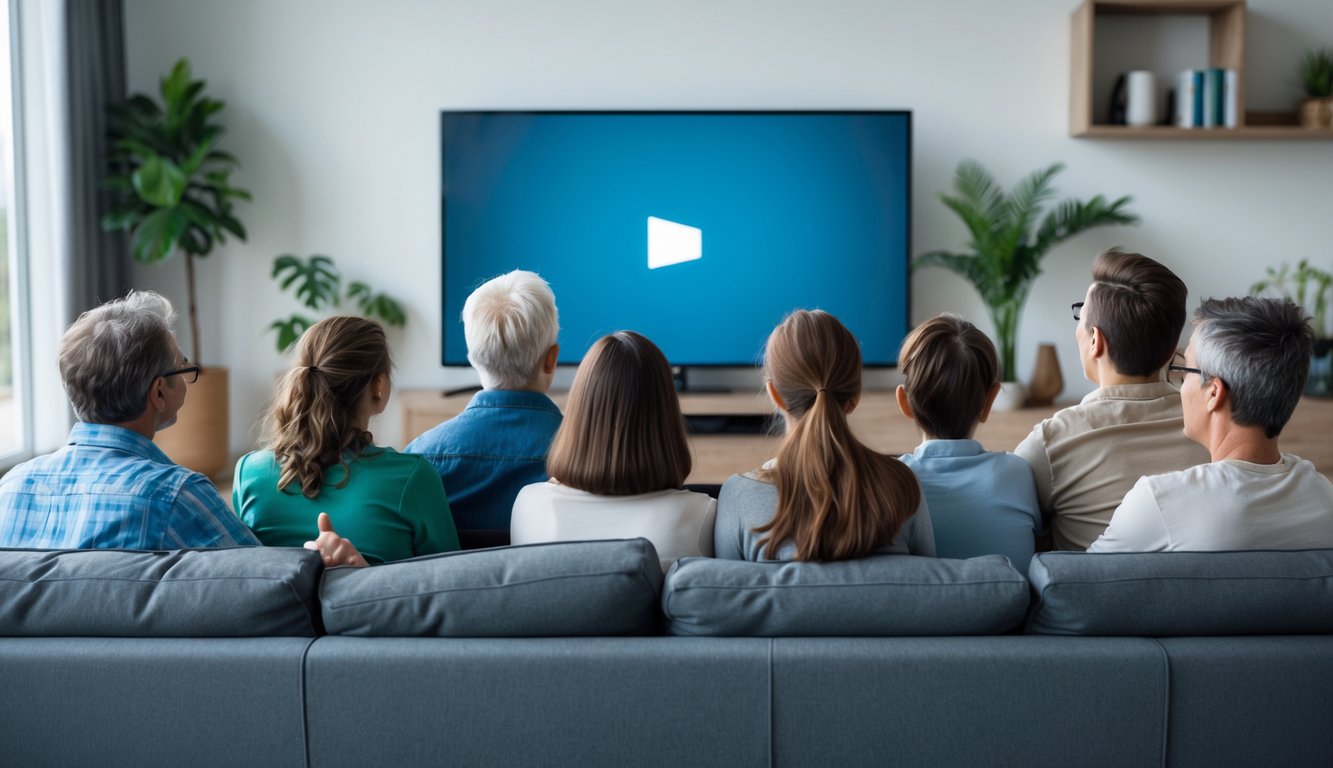
Okay, so let’s just say it: streaming platforms are kind of trolling us now, right? Prime Video, Max, Hulu—doesn’t matter, they all quietly padded out ad breaks. “Quick break”? That phrase means nothing anymore. Now it’s just, here’s a four-minute block, deal with it. Max used to brag about “fewer interruptions,” but now, according to AdWeek, they’ve somehow wedged in 50% more ad time than last year. I’m paying ten bucks a month and still watching the same old car commercials I saw in high school. Is there a secret club where they all agree to pretend this is normal? Because I’m not in it. And don’t even get me started on Paramount+ versus Pluto TV—The Streamable actually clocked 30-minute ad marathons, which, what are we even doing?
Supposedly, 78% of streaming services in 2024 just straight-up block ad skipping now—Symphony’s study says so, but I feel like we all knew it. Remember pretending you had control? Gone. An analyst at OTT Xchange (I think his name was Mark, or maybe Mike, I wasn’t paying attention) claimed advertisers want more mid-rolls to “boost engagement.” My engagement? That’s with the mute button and staring into the fridge, not whatever burger they’re pushing. Ever notice how the ad volume spikes right after a dramatic scene? Not scientific, but my ears hurt and I’m about ready to start timing these breaks with a stopwatch. Runtime numbers? Might as well be random.
The Recent Evolution of TV Ad Breaks
I wasn’t hungry, but somehow, every ad break turns into a snack run—long, awkward, and not exactly rare. Free-to-air networks keep raking in ad money (gambling ads alone hit $162 million, ACMA says), and yet my patience is running out. I expected skip buttons on streaming, but now network TV feels like it’s copying all the worst streaming habits.
How Major Networks Are Changing Commercial Breaks
Are they making ad breaks longer again? Feels like it. Not subtle, either. I’m not nostalgic for short breaks, but when Ofcom in the UK starts “reassessing” how often and how long the breaks are, you know something’s up. I actually counted once—three major networks all dropped to commercial at the exact same time. Some TV exec called it a coincidence on a podcast. Sure, buddy.
Breaks are longer, sometimes packed closer together, probably hoping I’ll just sit there and wait. But no, I’m juggling my phone, the remote, and whatever’s in the snack drawer. Last year’s revenue reports? Just confirm what I already feel: more frequent, longer, and even less subtle ad clusters. They’re not doing this for my comfort, let’s be real.
Drivers Behind the Shift in Ad Strategies
Let’s not pretend this is about “viewer experience.” It’s always money and tech. I know at least three ad people (one’s obsessed with The Sopranos, weird flex) and they all complain about YouTube and TikTok sucking up viewers. ACMA says gambling ads alone pull $162 million, so TV’s not giving up that cash without a fight.
A friend in programmatic ad sales—he hates binge-watchers because DVR and on-demand killed live ad money. Tech lets us skip, so networks just slam more ads into the few moments we can’t. Sports, “live” finales, all that. It’s why ad pacing feels so random now. Yet, I still catch myself googling “how long is this ad break” during cliffhangers. Has anyone actually found a reliable answer?
Impact on Traditional TV Advertising
I notice the difference, and it’s not subtle. Streaming made me impatient, TV made me annoyed, and now somehow both just frustrate me. ACMA says gambling’s only 5% of a $3.6 billion pie, so these changes aren’t about luxury—they’re desperate, honestly.
And ad-supported streaming? Not immune. Long breaks on paid tiers push people (me included, sometimes) toward ad-free upgrades or even VPNs to dodge the ads. A network scheduler once told me, “We watch drop-offs live. Longer breaks, more people leave after the third ad, but buyers want clusters for recall.” Nobody’s figured it out. By the third insurance jingle, I’m convinced: not even the networks know what the “right” commercial break is anymore.
What Changed in the Structure of Commercial Breaks

I barely reheat leftovers and—bam—another three-minute block of car insurance and fast food ads, right as I hit “start.” These commercials aren’t just longer; they’ve mutated, shuffled, and now I’m pretty sure they’re testing how much I’ll take before I snap. Everyone’s got a theory—Nielsen, some dude from my college, my neighbor’s cousin.
Longer Ad Breaks vs. More Frequent Short Breaks
It’s wild—networks used to think we’d bail if ads went too long. “99 seconds, that’s the sweet spot!”—someone in a suit probably yelled that in a meeting. Then streaming came along with ad blocks that sometimes last over two and a half minutes. Hulu’s “free” binge? Regretted it. TV execs can’t decide: stretch out the breaks or just hit us with a bunch of micro-interruptions. Nielsen says we get “numb” to big blocks (Newsmax, May 2024). My cousin calls it psychological warfare. And when all the networks sync up breaks—classic affiliate move, but still—forget sneaking in a bathroom trip. If I hear “new lower price” shampoo one more time, I’ll probably start humming the jingle in my sleep. Pro tip: mute button still works if you try hard enough.
30-Second Ads and Other New Formats
Shorter ads, somehow more annoying. The new 30-second spots drop in like they’re precision airstrikes, sometimes right in the middle of a line—mid-word, honestly. Fox claims viewers are 40% less likely to skip if it’s a short interactive ad on Hulu (I skimmed that in a Fox press release or maybe Kellogg Insight, whatever). Clicking a virtual car? Not “engagement,” sorry. Even brands that used to tell real stories now just cram everything into ten seconds, all AI-inserted. A producer friend told me writers now script “pause-friendly” moments for ad drops. There’s also these micro-formats—ten-second teasers, QR codes under the weather. Just long enough for me to forget what I was watching. My dad still says the old 60-second jingle was better, but I’m not fighting him on that. The American Marketing Association found 30-second spots are 80% as memorable as full ones, but only if the message is simple. Nobody tells you that in those shiny ad school brochures.



